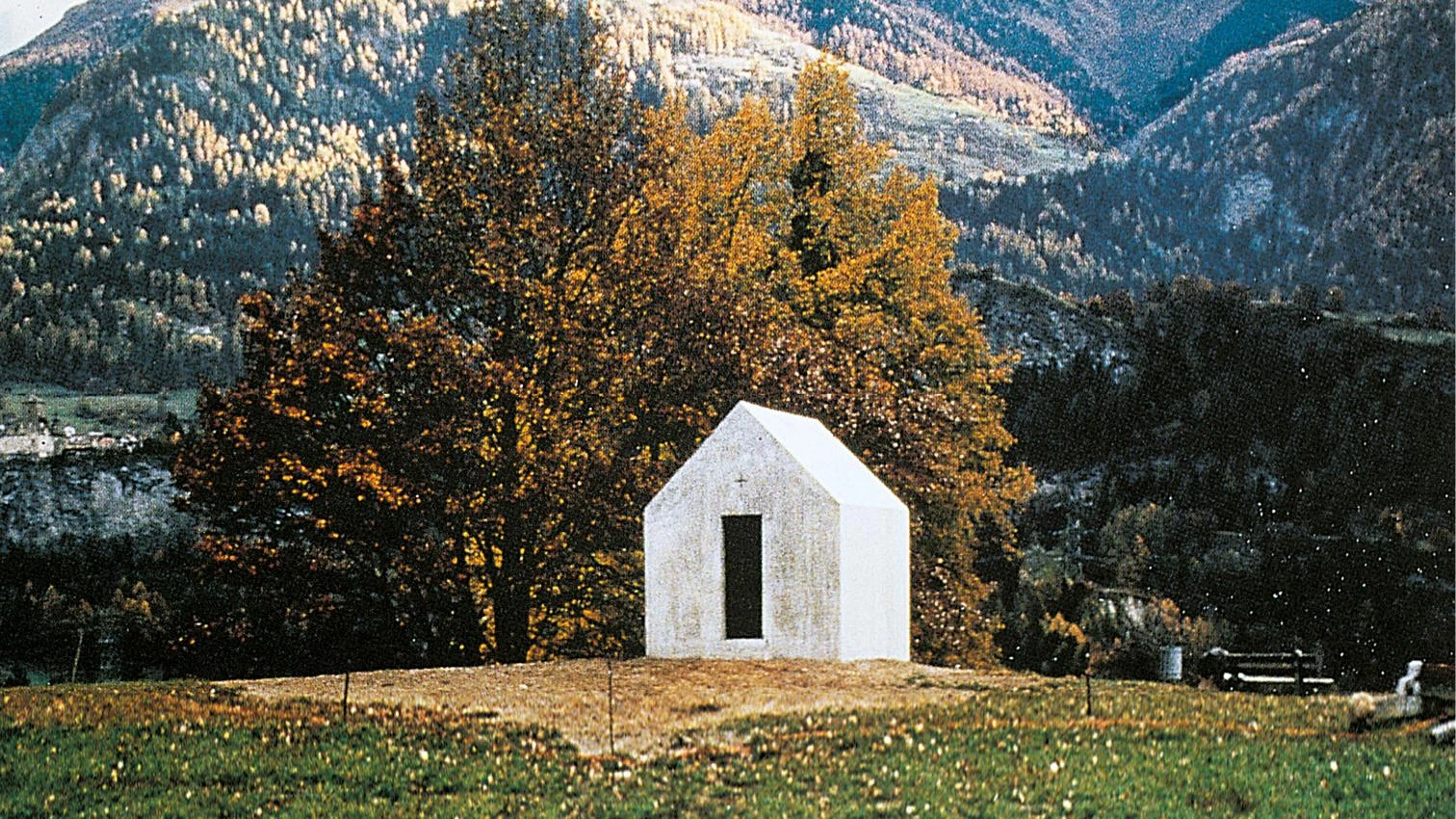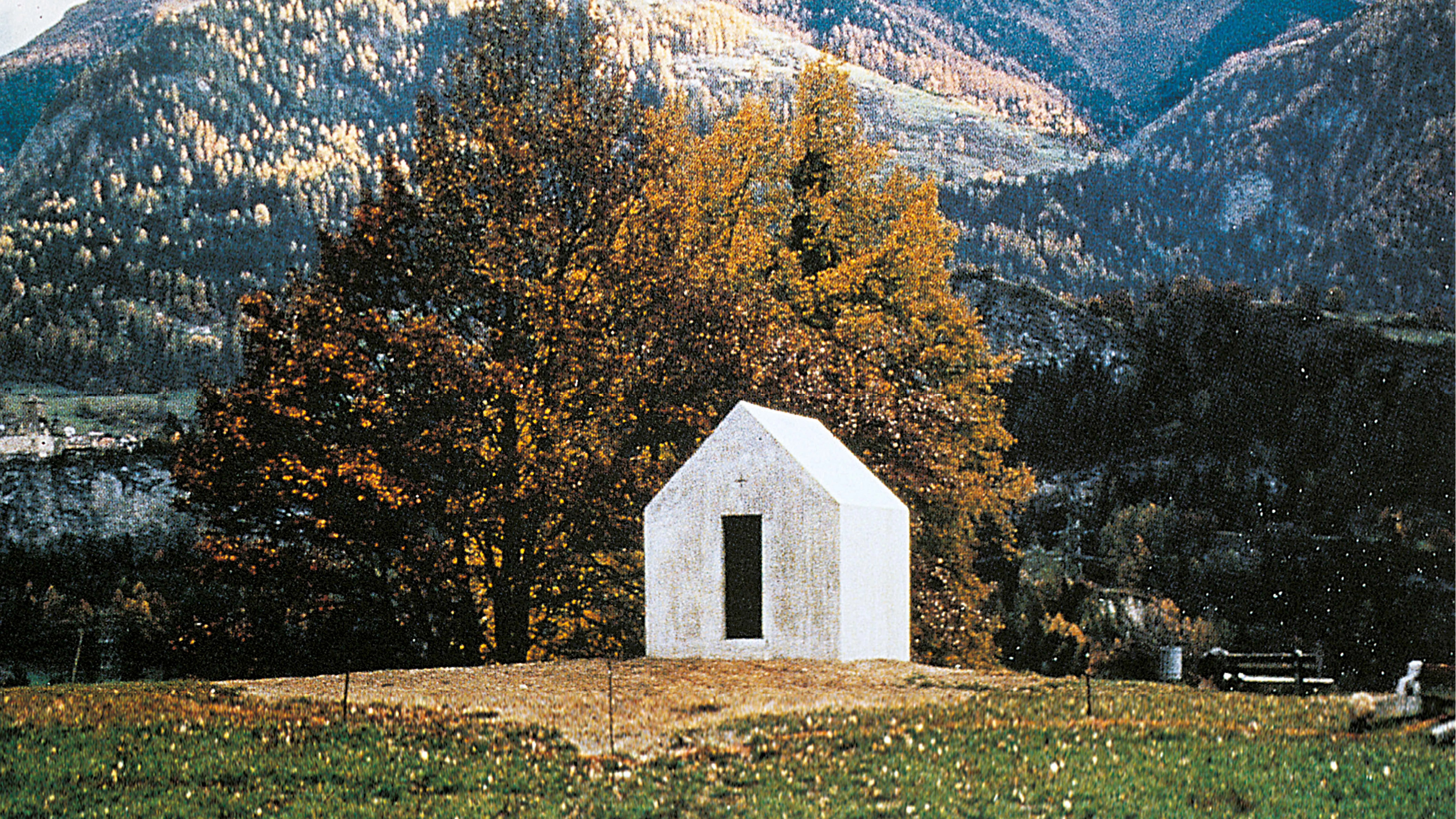¡

Chapel in the Oberrealta Mountains, 1992
The shelter of Caspar David Friedrich sums up, in its snow-capped geometry, the parasol and blanket of Goya: textile architectures of thermal comfort set against the bright bubble of the bonfire. Cabin and campfire belong to architecture’s childhood, and their mythical origins remind us that construction needs both matter and energy. Matter turns into energy through combustion, but also when consumed as food: the house of Hansel and Gretel is edible, as are those of the Russian peasants who use them to feed cattle in times of famine. The nostalgia of the elementary house was expressed by Rossi in his drawings of beach cabins, and it is also present in the chapel of Christian Kerez or in the domestic project of Hreinn Fridfinnsson. But a hut as spartan as that of Unabomber in the Montana woods, photographed by Richard Barnes in a San Francisco warehouse, can also be towed to court as proof of insanity. Something quite different from the austere laconicism of the Zachary house, or the antropomorphic, weightless poetry of the Rudin house, a declaration of faith in the principles of things (foundations and beginnings at once) which can be counterposed to the house involuntarily deconstructed by Buster Keaton...[+]






